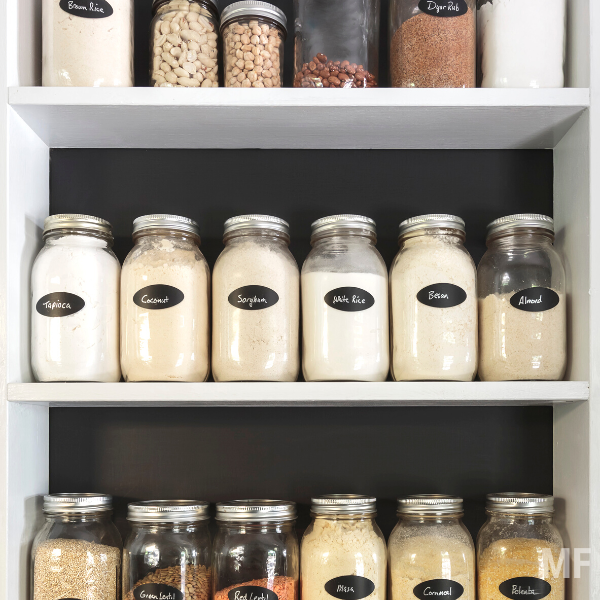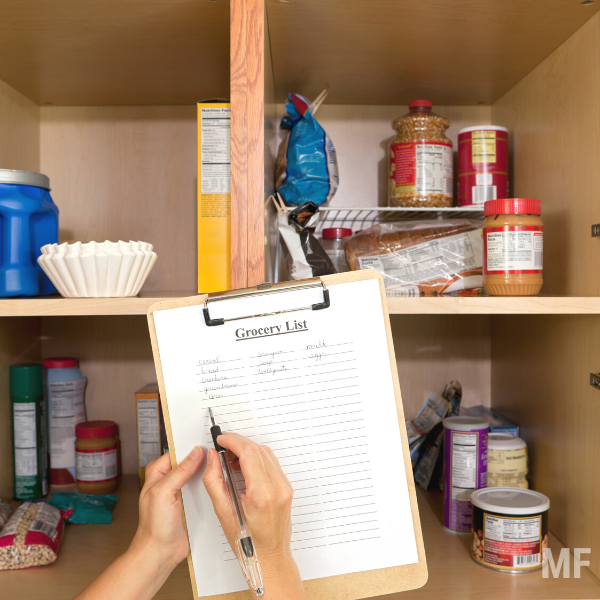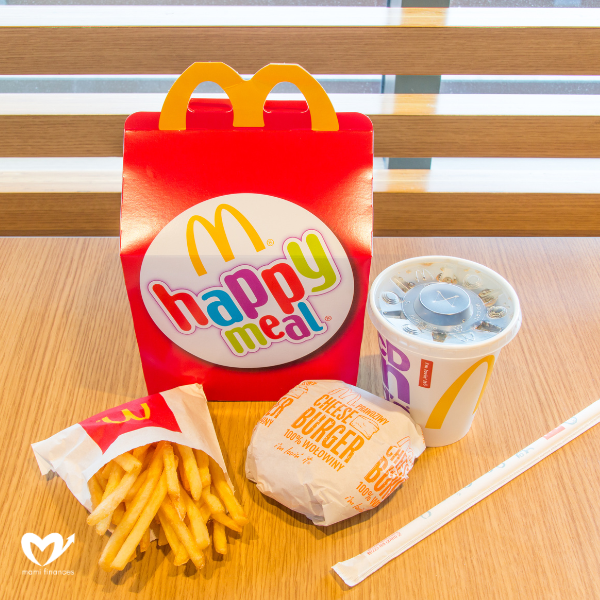What Foods Should Be In Your Pantry?
A well-stocked pantry is an essential component of any kitchen. It provides you with the necessary ingredients to create meals at a moment's notice, without the need for constant trips to the grocery store. Having a wide variety of staple items ensures that you always have something to cook, even when you're low on fresh ingredients.

Also, a stocked pantry can save you money by allowing you to buy items in bulk or take advantage of sales. With a well-stocked pantry, you'll be ready to whip up delicious meals whenever hunger strikes.
Essential pantry staples
Essential pantry staples are the foundation of a well-stocked kitchen. These items are versatile, long-lasting, and can be used to create a variety of dishes. Grains and cereals such as rice, pasta, and oats are great staples to have on hand for quick and easy meals. Legumes and beans provide a good source of protein and can be used in soups, stews, and salads.
Canned vegetables and fruits are convenient additions to any recipe. Oils and vinegars add flavor to dishes, while herbs and spices enhance the taste. Sauces and condiments bring additional depth to meals, while baking essentials like flours help create delicious treats. By keeping these pantry staples stocked, you'll always have the basics needed for a delicious meal at home.
1. Grains and cereals
Grains and cereals are essential pantry staples that provide a foundation for many meals. Options such as rice, quinoa, oats, and barley are versatile and can be used in a variety of dishes. They are rich in carbohydrates, fiber, and nutrients like B vitamins and iron.
Also, cornmeal and bread crumbs are great options for adding texture to recipes. By keeping a variety of grains and cereals in your pantry, you'll always have the base ingredients needed to create delicious and wholesome meals.
2. Legumes and beans
Legumes and beans are versatile pantry staples that provide a great source of plant-based protein and fiber. Stocking your pantry with a variety of legumes, such as chickpeas, lentils, black beans, and kidney beans, allows you to easily whip up nutritious meals like soups, stews, salads, and even veggie burgers.
Also, legumes are budget-friendly options that can help stretch your meals and save you money. So make sure to have a variety of canned or dried legumes on hand for quick and healthy meal options.
3. Pasta and noodles
Pasta and noodles are versatile pantry staples that can be used to create a variety of delicious meals. Whether it's comforting spaghetti and meatballs or a stir-fry with noodles, having pasta and noodles on hand ensures you'll always have a quick and satisfying meal option.
There are so many different types to choose from, including spaghetti, penne, macaroni, and rice noodles. They're also incredibly shelf-stable, meaning they can be stored for long periods of time without spoiling. So go ahead and stock up on your favorite pasta and noodle varieties to keep your pantry well-prepared for any culinary adventure.
4. Canned vegetables and fruits
Canned vegetables and fruits are a convenient and versatile addition to any well-stocked pantry. They are a great option for when fresh produce is not readily available or to save time on meal preparation.
Canned vegetables like tomatoes, corn, and green beans can be used in soups, stews, and stir-fries, while canned fruits like peaches and pineapple can be enjoyed as a sweet snack or added to desserts. Be sure to choose varieties that are packed in water or their own juice to avoid excess added sugars and sodium.
5. Canned proteins
Canned proteins are a convenient and versatile addition to any pantry. They provide a quick and easy source of protein for meals and can be used in a variety of dishes. Some popular options include canned tuna, salmon, chicken, and beans.
These canned proteins are not only convenient but also have a long shelf life, making them perfect for those times when fresh protein sources are not readily available. Whether you're making a salad, sandwich, or pasta dish, having a few cans of protein in your pantry ensures you always have a nutritious meal option on hand.
6. Oils and vinegars
Having a variety of oils and vinegars in your pantry is essential for adding flavor to your dishes. Olive oil, for example, is great for cooking and salad dressings, while sesame oil adds a nutty taste to stir-fries. Balsamic vinegar is a versatile option for salad dressings and marinades, and apple cider vinegar can be used for various purposes like pickling or soothing a sore throat. By keeping oils and vinegars stocked in your pantry, you'll always have the necessary ingredients to enhance the taste of your meals.
7. Herbs and spices
Having a well-stocked pantry wouldn't be complete without a collection of herbs and spices. These flavorful additions can enhance any dish and take it to the next level. From basil and oregano to cumin and turmeric, herbs and spices offer endless possibilities for creating delicious meals.
They can also add depth and complexity to your cooking, allowing you to experiment with different flavors. Whether you're making a hearty stew or a simple salad dressing, having a variety of herbs and spices on hand will elevate your culinary creations.
8. Sauces and condiments
Sauces and condiments are the flavor-enhancers that can transform a simple meal into a culinary delight. From tangy ketchup to spicy sriracha, having a variety of sauces and condiments in your pantry can add depth and taste to your dishes.
Some essential options to have include mustard, mayonnaise, soy sauce, hot sauce, and various salad dressings. These versatile ingredients can be used in marinades, dips, or simply as toppings to elevate the flavors of your favorite recipes. With sauces and condiments at hand, you'll never have a bland meal again.
9. Baking essentials
When it comes to baking, having a well-stocked pantry is essential. Baking essentials include items like flour, sugar, baking soda, baking powder, and vanilla extract. These ingredients are the building blocks of delicious baked goods like cakes, cookies, and breads.
It's also a good idea to have other essentials like chocolate chips, nuts and dried fruits on hand for added flavor and texture. With these baking essentials in your pantry, you'll be able to whip up homemade treats whenever the mood strikes.
10. Snacks and treats
When it comes to stocking your pantry, don't forget to include a selection of snacks and treats to satisfy those cravings. Whether you have a sweet tooth or prefer something savory, having a variety of snacks on hand ensures that you can always reach for something when hunger strikes.
Consider including items such as granola bars, popcorn, nuts, dried fruit, and dark chocolate. These pantry staples will not only keep you satisfied between meals but also provide a delicious indulgence when you need a little pick-me-up.
11. Beverages
When it comes to stocking your pantry, don't forget about beverages! Having a variety of drinks on hand can be a lifesaver, whether you're hosting guests or simply looking to quench your thirst. Consider keeping a selection of bottled water, fruit juices, soda, tea bags, coffee beans or grounds, and hot chocolate mix.
These options will cater to different preferences and provide refreshing choices for every occasion. Remember to check expiration dates periodically and restock accordingly, so you're always prepared for a beverage break. Cheers!
12. Miscellaneous items
In addition to the essential pantry staples mentioned earlier, it's also important to include some miscellaneous items in your pantry. These are the little things that may not fit into a specific category but can make a big difference in your cooking. Some examples of miscellaneous items to have on hand include stock cubes or bouillon, canned sauces or soups, condiments like ketchup and mustard, and pickles.
These items can add flavor and depth to your dishes and can be used as a quick fix when you're missing a key ingredient. Having these miscellaneous items in your pantry ensures that you have everything you need to whip up delicious meals at any time.

Tips for organizing your pantry
Keeping your pantry well-organized not only makes it easier to find what you need but also helps reduce food waste and saves you time in the kitchen. Here are some useful tips for organizing your pantry:
- Use clear containers: Transferring dry ingredients like grains, pasta, and beans into clear containers allows you to see exactly what you have at a glance.
- Label everything: Labeling containers and shelves helps you quickly identify where each item belongs, making it easier to maintain order.
- Group similar items together: Keep all canned goods in one area, organize spices in a separate section, and group baking essentials together. This makes it simpler to locate specific ingredients.
- Utilize storage solutions: Invest in storage solutions such as stackable bins, shelves, or spice racks to maximize space and keep everything tidy.
- Rotate and restock regularly: Ensure older items are used first by practicing the “first in, first out” rule. Regularly check expiration dates and restock your pantry accordingly.
By implementing these tips, you'll create an organized pantry that not only looks great but also makes meal preparation a breeze.
1. Use clear containers
Using clear containers in your pantry can make a world of difference when it comes to organization. Not only do they allow you to easily see what's inside, but they also keep your food fresh and protected from pests. Clear containers are especially useful for storing dry goods like grains, cereals, and pasta.
With a quick glance, you can quickly identify what you need and avoid rummaging through a cluttered pantry. Plus, they add a sleek and uniform look to your shelves, giving your pantry a tidy and organized appearance. So invest in some clear containers and watch your pantry transform into a well-organized space.
2. Label everything
Organizing your pantry becomes even more efficient when you label everything. Use clear, easy-to-read labels on your containers and shelves to keep track of what's inside. This makes it easier to find ingredients quickly and prevents any confusion when cooking.
Consider using a labeling system that categorizes items by type or meal use. Not only will this save you time, but it will also help keep your pantry tidy and organized. Plus, it adds a nice touch of visual appeal to your pantry space.
3. Group similar items together
When organizing your pantry, it's helpful to group similar items together. This makes it easier to find what you're looking for and ensures that nothing gets forgotten at the back of the shelf.
For example, you could create sections for grains and cereals, legumes and beans, pasta and noodles, canned vegetables and fruits, canned proteins, oils and vinegars, herbs and spices, sauces and condiments, baking essentials, snacks and treats, beverages, and miscellaneous items. By grouping these items together, you'll have a well-organized pantry that makes meal prep a breeze.
4. Utilize storage solutions
Another important aspect of organizing your pantry is utilizing storage solutions. Invest in some clear containers or jars to store items like grains, legumes, and snacks. This not only keeps your pantry neat and tidy, but it also allows you to see what ingredients you have available easily.
Also, consider using shelves or racks to maximize vertical space in your pantry. Drawer dividers can also help keep smaller items like spices and condiments organized. By utilizing these storage solutions, you can create a functional and efficient pantry.
5. Rotate and restock regularly
To maintain a well-stocked pantry, it's important to rotate and restock your supplies regularly. This ensures that your ingredients stay fresh and minimizes waste. When you bring home new items, place them behind the older ones to ensure that the older ones are used first.
Keep an eye on expiration dates and make a habit of checking your pantry regularly for any expired or spoiled items. By rotating and restocking, you'll always have a reliable supply of food in your pantry.

Creating a shopping list for your pantry
When it comes to stocking your pantry, having a well-organized shopping list is essential. To create an effective pantry shopping list, start by assessing your current inventory and taking note of what items need replenishing.
Consider the essentials such as grains, canned goods, spices, and baking staples. From there, think about your favorite recipes and the ingredients they require. It's also helpful to plan meals for the upcoming week and include any ingredients needed in your shopping list.
With a comprehensive shopping list in hand, you can ensure that your pantry is always stocked with the essentials for delicious and convenient meals.






